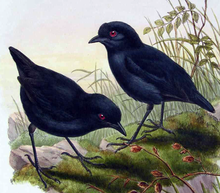소네트 143
Sonnet 143| 소네트 143 | |||||||
|---|---|---|---|---|---|---|---|
 1609년 쿼토에 있는 소네트 143 | |||||||
| |||||||
소네트 143은 영국의 극작가 윌리엄 셰익스피어가 쓴 154개의 소네트 중 하나이다.
구조
소넷 143은 영국식 또는 셰익스피어식 소네트다. 영국의 소네트에는 3개의 쿼트라인이 있고, 그 뒤에 마지막 운율의 쿠펠레가 있다. 그것은 ABAB CDCD EFEF GG 형식의 전형적인 운율 체계를 따르며, 5쌍의 미터법적으로 약한/강한 음절 위치에 바탕을 둔 시적 미터인 iambic pentameter로 구성되어 있다. 제7행은 일반 icambic pentameter를 예시한다.
× / × / × / × / × / × / 그녀의 얼굴 앞에 날아가는 것을 따라가려면, (143.7)
- / = 미터법적으로 강한 음절 위치인 ictus. × = nonictus.
라인 2는 공통의 계량적 변동, 즉 초기 반전으로 시작한다.
/ × × / × / × / × / × / 그녀의 깃털 같은 생명체 중 하나가 탈옥했다, (143.2)
초기 역전은 2행과 6행에서 발생하며, 잠재적으로 1행, 3행, 5행, 13행에서 발생한다. 이 시에서는 대칭어에 대한 대조 억양이 이야기의 성격과 계량기에 의해 제시되는 빈도 때문에 다른 맥락에서 하나의 계량적 변형을 암시할 수 있는 몇몇 구절들이 의심스럽게 여겨지고 있다. 예를 들어, 5행은 초기 및 중간선 반전을 모두 수행할 수 있다.
/ × × / × / × × / / 방치된 아이가 그녀를 쫓고 있는 동안, (143.5)
그러나, 이 이야기가 대명사를 강조함에 따라, 규칙적인 독서가 더 쉬워질 수 있다.
× / × / × / × / × / / 방치된 아이가 쫓아오는 동안, (143.5)
유사하게 12행의 "키스 미"는, 대부분의 맥락에서 "키스"의 강장 스트레스로 ICTus를 반전시킬 수 있는 것으로, 여기서는 "키스 미"에 대한 대조적인 억양을 암시함으로써 규칙적인 리듬을 유지할 수 있다. 8행과 12행은 규칙적인 리듬을 유지하는 강조 대명사를 제안할 수도 있다.
계량기는 4호선의 '수선복'을 첫 음절에 강조할 것을 요구한다.[2]
메모들
- ^ Pooler, C[harles] Knox, ed. (1918). The Works of Shakespeare: Sonnets. The Arden Shakespeare [1st series]. London: Methuen & Company. OCLC 4770201.
- ^ Groves, Peter (2013). Rhythm and Meaning in Shakespeare: A Guide for Readers and Actors. Melbourne: Monash University Publishing. p. 169. ISBN 978-1-921867-81-1.
참조
- 초판 및 팩시밀리
- Shakespeare, William (1609). Shake-speares Sonnets: Never Before Imprinted. London: Thomas Thorpe.
- Lee, Sidney, ed. (1905). Shakespeares Sonnets: Being a reproduction in facsimile of the first edition. Oxford: Clarendon Press. OCLC 458829162.
- 바리오룸 판
- Alden, Raymond Macdonald, ed. (1916). The Sonnets of Shakespeare. Boston: Houghton Mifflin Harcourt. OCLC 234756.
- Rollins, Hyder Edward, ed. (1944). A New Variorum Edition of Shakespeare: The Sonnets [2 Volumes]. Philadelphia: J. B. Lippincott & Co. OCLC 6028485.
- 최신 중요 버전
- Atkins, Carl D., ed. (2007). Shakespeare's Sonnets: With Three Hundred Years of Commentary. Madison: Fairleigh Dickinson University Press. ISBN 978-0-8386-4163-7. OCLC 86090499.
- Booth, Stephen, ed. (2000) [1st ed. 1977]. Shakespeare's Sonnets (Rev. ed.). New Haven: Yale Nota Bene. ISBN 0-300-01959-9. OCLC 2968040.
- Burrow, Colin, ed. (2002). The Complete Sonnets and Poems. The Oxford Shakespeare. Oxford: Oxford University Press. ISBN 978-0192819338. OCLC 48532938.
- Duncan-Jones, Katherine, ed. (2010) [1st ed. 1997]. Shakespeare's Sonnets. The Arden Shakespeare, Third Series (Rev. ed.). London: Bloomsbury. ISBN 978-1-4080-1797-5. OCLC 755065951.
- Evans, G. Blakemore, ed. (1996). The Sonnets. The New Cambridge Shakespeare. Cambridge: Cambridge University Press. ISBN 978-0521294034. OCLC 32272082.
- Kerrigan, John, ed. (1995) [1st ed. 1986]. The Sonnets ; and, A Lover's Complaint. New Penguin Shakespeare (Rev. ed.). Penguin Books. ISBN 0-14-070732-8. OCLC 15018446.
- Mowat, Barbara A.; Werstine, Paul, eds. (2006). Shakespeare's Sonnets & Poems. Folger Shakespeare Library. New York: Washington Square Press. ISBN 978-0743273282. OCLC 64594469.
- Orgel, Stephen, ed. (2001). The Sonnets. The Pelican Shakespeare (Rev. ed.). New York: Penguin Books. ISBN 978-0140714531. OCLC 46683809.
- Vendler, Helen, ed. (1997). The Art of Shakespeare's Sonnets. Cambridge, MA: The Belknap Press of Harvard University Press. ISBN 0-674-63712-7. OCLC 36806589.




